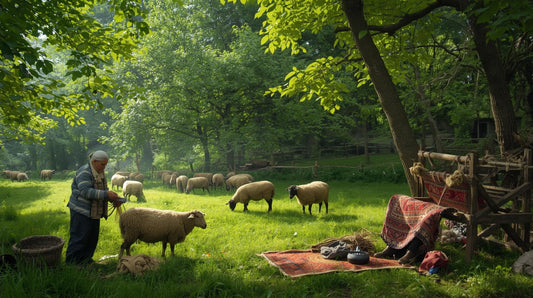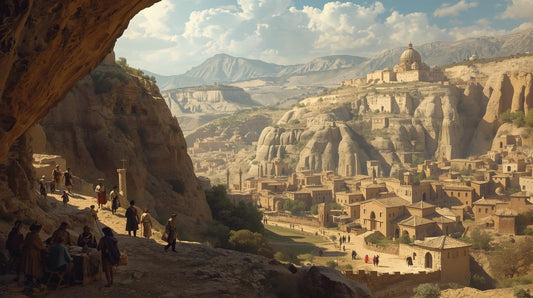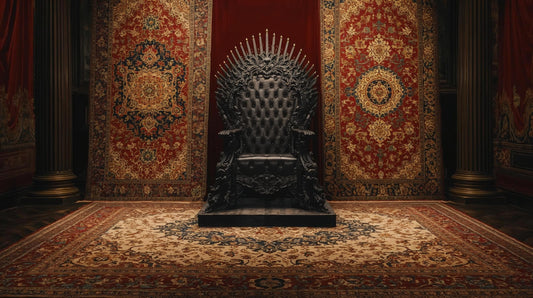Christian Cappadocia: From Early Communities to Medieval Monasticism

Cappadocia, in the high central plateau of Anatolia, became an early heartland of Christianity in Asia Minor. Its soft volcanic tufa allowed believers to carve houses, chapels and entire monasteries into the hills. UNESCO notes that Göreme and surrounding valleys preserve hundreds of rock-hewn sanctuaries – over 200 churches and monastery complexes have been documented making Cappadocia one of the world’s largest Christian cave-dwelling landscapes. In these carved chapels, Byzantine Christian art flourished: after the 9th century iconoclastic period, many churches were richly frescoed with Biblical scenes. Today the ruined cave abbeys and frescoed chapels of Cappadocia stand as “irreplaceable testimony” to Byzantium’s post-iconoclastic faith.
Apostolic Foundations and Early Bishops
Christianity reached Cappadocia very early. The Book of Acts (2:9) and First Peter (1:1) name Cappadocian believers at Jerusalem’s Pentecost and in the early Christian assembly. By the 2nd–3rd century the region was already organized with bishops and schools of theology. Traditions record Alexander of Cappadocia (c.170–250 AD) as the first known bishop of the province. Alexander had been a student of Clement of Alexandria, and he later invited Clement to teach in Cappadocia around 200 AD – in effect founding a local catechetical school. Eusebius writes that Clement’s ministry “increased the quality and expanded the quantity” of the Church in Cappadocia, implying a thriving Christian community by the early 3rd century. Even at this early stage, Cappadocian Christians connected with wider orthodoxy: Alexander corresponded with the churches of Alexandria, Antioch and Jerusalem. These connections helped integrate Cappadocia into the broader Christian world; soon after, Alexander himself became Bishop of Jerusalem (around 212 AD), the first known Cappadocian to hold that office.
Throughout the Roman era, Cappadocians endured persecution for their faith. Alexander was imprisoned for his confession of Christ (during Septimius Severus’s persecutions around 210 AD) and later died as a martyr or confessor. Even so, the Christian population grew. By the 4th century, the Church in Cappadocia was well-established and produced some of Christendom’s most celebrated theologians – the so‑called “Cappadocian Fathers.”
Basil of Caesarea and the Cappadocian Fathers
In the 4th century, Cappadocia gave birth to a trio of towering churchmen: Basil the Great, Gregory of Nyssa, and Gregory of Nazianzus. Together they “helped shape both early Christianity and the monastic tradition” and are honored as saints in East and West. Basil (329–379 AD), who became Bishop of Caesarea (modern Kayseri), was especially influential. On his family estate he founded a pioneering communal monastery with an attached hospital, hospice and poorhouse – the famous Basiliad – explicitly to care for the need. This complex of church, living quarters and charitable institutions was hailed as a wonder of the world by contemporaries, and established a pattern of Christian social welfare in the Byzantine East.
Basil also codified monastic life. In letters and treatises he laid out a rule for cenobitic (communal) monks, emphasizing poverty, liturgy and work. “Here Basil wrote about monastic communal life,” notes one scholar, and his writings “became pivotal in developing monastic traditions of the Eastern Church”. He urged monks to pray constantly, care for the poor, and live together in simplicity. His mother Emmelia, sister Macrina and brother Peter joined him as fellow ascetics on the family estate, turning it into a model monastic community. Gregory of Nyssa (Basil’s younger brother) and Gregory of Nazianzus (Basil’s friend) continued this legacy, combatting heresies like Arianism and defining orthodox Trinitarian doctrine. Through their teaching and example, the Cappadocian Fathers stamped the region with a reputation for deep spirituality and rigorous scholarship.
Göreme Open Air Museum in Cappadocia, where monastic communities carved dozens of chapels and churches from the soft volcanic rock.
By the late 4th century, small groups of anchorite monks (hermits) were living in isolated cells cut into the rocks of Cappadocia, following Basil’s inspiration. In fact, UNESCO notes “the first signs of monastic activity in Cappadocia date back to the 4th century,” when hermits “acting on the teachings of Basil” began carving rock-cells. These hermits gathered in loosely organized monastic villages over time. Basil himself traveled among these communities and ordained monks, and his creed of hospitality made Cappadocian monasteries centers of worship and service. Every morning and evening he celebrated the liturgy in his church at Caesarea, attracting clergy and laypeople alike.
Rock-Cut Churches and Byzantine Monastic Life
During the Byzantine period (roughly 5th–11th centuries), Cappadocian Christians built hundreds of rock-cut churches and cloisters in the valleys and ravines. The soft tuff could be hollowed into vaulted rooms, chapels, refectories and dwellings. People of Göreme “realized that these soft rocks could be easily carved out to form houses, churches, and monasteries,” and indeed many local villages are literally built into fairy‑chimney pinnacles and cliffs. Today about 200 of these cave-churches are protected as cultural monuments, each once serving a monastery or community of monks or nuns. They range from simple hermit cells to large, multi-room complexes with courtyards, kitchens and guest quarters.
Inside these cave churches the walls were painted with Christian iconography. In the 8th–9th centuries (the Byzantine iconoclast era) most decoration was deliberately spare – typically just carved or painted crosses – in obedience to the imperial ban on images. After iconoclasm ended in 842 AD, however, Cappadocian churches were richly frescoed. Numerous Göreme churches feature colorful narrative cycles: for example, Tokalı (the “Buckled Church”) contains 9th–11th century murals of the Apostles and scenes of Christ’s life, painted with pigments like lapis lazuli imported from distant Persia. Other celebrated chapels – Dark Church (Karanlık Kilise), Elmalı Church, Saint Barbara’s Church and more – preserve post-iconoclastic scenes of the New Testament, the Virgin Mary and local saints. One striking feature of Cappadocian art is its local variation: in the Old Church of Tokalı, for instance, the Christological sequence uniquely follows the apocryphal Gospel of James rather than the canonical gospels. Scenes like the “Flight of Elizabeth” and “Murder of Zechariah” appear there because the artist used James’s infancy narrative. This suggests the worshippers in these remote valleys retained older devotional traditions alongside the Byzantine rite.
The monastic life in these rock complexes was austere. Monks and nuns gathered for communal liturgies in the carved chapels, using simple altars and icon screens. Springs or cisterns collected water, and fields above provided modest crops. The monasteries followed the Great Fast and feasts of the Eastern Church calendar, just as other Byzantine communities did. Liturgical language was Greek, and Greek inscriptions and prayers survive on some sanctuary walls. In the words of UNESCO, Cappadocia’s cave sanctuaries are “Christian dwellings, villages, convents and churches” that “retain the fossilized image of a province of the Byzantine Empire between the 4th century and the arrival of the Seljuk Turks (1071)” – in other words, a perfectly preserved snapshot of medieval Orthodox life.
Subterranean Cities of Worship and Refuge
Beyond isolated monasteries, Cappadocian Christians also inhabited elaborate underground cities. The best-known are Derinkuyu and Kaymaklı: multi-level tunnel complexes carved into the earth to shelter whole populations. These “subterranean towns” contained everything a community needed during a siege – stables, storerooms, kitchens, even wine and oil presses. Crucially, they also included chapels and churches. In Derinkuyu, for example, archaeologists have identified a rock-cut church hall on the lowest level and smaller prayer rooms off the tunnels. A photograph of its corridors (above) hints at the hidden sanctuaries among these vaulted passages.
Interior of the Derinkuyu underground city, one of many multi-level cave settlements in Cappadocia. Such subterranean complexes – complete with chapels and communal rooms – allowed Christians to hide and worship during invasion.
These underground refuges were built and expanded over centuries, especially during times of war. The tunnels originated in earlier eras (some chambers date to Phrygian and Hellenistic times), but reached their full extent in the Byzantine era to face Arab raids. Kaymaklı and Derinkuyu were greatly deepened between the 8th and 12th centuries, explicitly “used for protection from Muslim Arab raids” during the long Arab–Byzantine wars (780–1180 AD). Tunnels linked these cities to each other, enabling villagers to flee underground at a moment’s notice. They remained in use through the late Middle Ages: local Cappadocian (Greek-speaking) Christians again sealed themselves underground during 14th-century Mongol (Timur) attacks. Even after Seljuk Turkish conquest, the underground cities served as kataphygaia (refuges) from later troubles. In sum, Cappadocia’s subterranean network provided a sacred sanctuary as well as a military one: every sleeping chamber and cavern could be converted into a place for vigil and prayer when flight above ground was impossible.
Theology, Liturgy and Art of Cappadocia
The spiritual life of Cappadocia was marked by both high theology and folk devotion. The Cappadocian Fathers advanced crucial doctrines – especially the doctrine of the Trinity – which were ratified at Constantinople in 381. These ideas were woven into the liturgy and art of the region’s churches. For example, many fresco programs emphasize Christ as Pantokrator and the Holy Spirit (often depicted as a dove), reflecting Cappadocia’s orthodox creedal emphasis. Local liturgical books and inscriptions are in Greek, linking the faithful to the wider Byzantine Rite. (Basil himself wrote eucharistic prayers that survive in the Orthodox liturgy today – indeed, the Liturgy of St. Basil is still used on certain feasts, though this specific tradition is preserved beyond our sources here.)
In cave-church art one sees Cappadocian piety expressed through vivid storytelling. Mary, revered by these monks, appears in multiple churches under the title Theotokos (Mother of God) or Panagia (All-Holy). Scenes from the lives of revered local saints – for instance, images of Saint Basil himself, or the Forty Martyrs (among whom Cappadocian Leontius appears) – are also common. One unique feature, noted above, is the use of apocryphal infancy scenes from the Gospel of James. This suggests Cappadocian devotion preserved legends outside the canonical Gospels, perhaps reflecting liturgical readings or congregational preferences in remote valleys. In short, Cappadocia’s Christian art reveals a blend of orthodox theology and local spiritual flavor.
Legacy of Cappadocian Christianity
By the late medieval period, Cappadocia’s Christian communities were finally eclipsed by changing empires. The Seljuk Turks captured the region after 1071, and over subsequent centuries the Christian populations diminished. Yet what they built and believed endured in stone and memory. The network of caves and frescoes forms a “fossilized image” of a vanished Byzantine civilization. As UNESCO observes, the “incomparable beauty” of the Christian sanctuaries in Cappadocia makes the region a leading example of Byzantium’s post-iconoclastic art.
For Christians today, Cappadocia’s significance is profound. It was home to saints and holy men, a cradle of Eastern monasticism, and a place where ordinary villages lived out the faith in seclusion. The fact that St. Peter addressed believers in “the churches of Cappadocia” (1 Peter 1:1) and that Cappadocian exiles heard the apostles in Jerusalem (Acts 2:9) ties the land directly to the earliest church. Over the following centuries every Cappadocian cave-church bore witness to the rhythms of worship – baptism, Divine Liturgy, feast and fast – echoing through rock chambers. Basil’s basilicas, Gregory’s sermons, and the shimmer of Byzantine frescoes all attest that Cappadocia was not peripheral but deeply integral to Christian history. Even now, in its silent canyons and mossy grottoes, one senses the “living hope” of those first Christians – a hope proclaimed from pulpits and painted on walls in faith.
No comments







0 comments